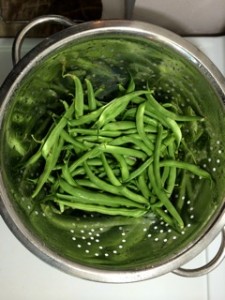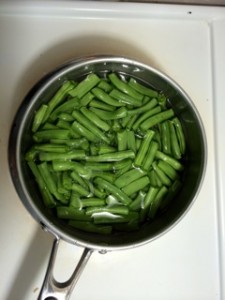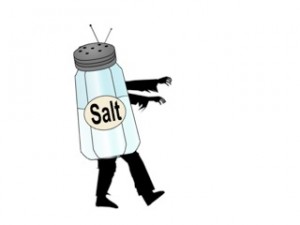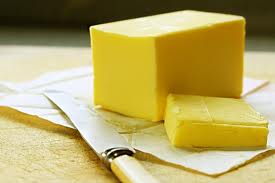 Why Avoiding Dairy Might Be a Good Option
Why Avoiding Dairy Might Be a Good Option
Food issues are complicated.
I recently ranted about butter vs margarine (see article here). I came out in favour of butter.
Now I have a confession.
I stopped ingesting dairy in January 2012.
Every year I try to make a change to improve my health. I decided to try eliminating all dairy products.
I was surprised at the outcome. I immediately stopped snoring, a condition of great concern to my light-sleeping husband. I also ceased to require deodorant (unless I have cheese. Then I stink the next day!)
Truthfully, dairy hasn’t agreed with me since I was a child. My grandparents had mixed farms, including a few dairy cows. We drank warm milk, fresh from the separator (a machine for separating cream (milk fat) from milk).
I never liked warm milk with the fresh froth on top. It tasted like cow.
In fact milk has always tasted off to me. (When my kids were little and drank milk I could never discern whether the milk in the carton was sour).
But buying into the “dairy is essential to good health” mantra, I sought palatable forms. I liked cottage cheese and other soft and hard cheeses, sour cream and ice cream. Cream didn’t bother me and I would pour it on my cereal instead of milk. I drank chocolate milk and added milk to soups in an effort to consume dairy.
One day about 20 years ago, I had a Dairy Queen strawberry milkshake, my favourite rare treat. Within an hour my intestines were twisting. I felt like I had a couple of sumo wrestlers in there. It lasted for several hours, tempting me to go to Emergency more than once.
I noticed discomfort with other ice cream so I eliminated it from my diet for five years. When I reintroduced it, it was occasional and only high-quality varieties.
By the time I gave up dairy, I was eating cheese once per week, cream on berries occasionally, ice cream twice a month. I would add a tsp of butter to steamed veggies or to fry a free-range egg. A pound of butter would last a month or two.
Post snore, I find coconut oil is a suitable butter substitute. Now that I’ve tasted ice cream made with coconut milk I will never go back to dairy: no cow taste and no mucous! Almond milk is another product that I use. I find it works in most places milk is required.
I am conflicted. Butter is natural.
But is it really?
Modern dairy operations are CAFO’s (Confined Animal Feeding Operations). Milk from grass-fed, hormone-free, pesticide-free cattle is nutritionally superior to milk from CAFO animals. It has more vitamins and more healthy fats.
Animals in CAFO’s are sick. They need antibiotics to survive like junkies need heroine. They live and produce for only a fraction of their natural life expectancy due to inferior feed and the stress of CAFO life.
I was taught that we don’t eat sick animals or their products. CAFO milk is sick. Therefore so is its milk fat (butter).
Modern dairy processing further renders milk indigestible and void of most of its celebrated benefits. Pasteurization and homogenization threaten enzymes, kill beneficial bacteria and change the structure of the milk and, some claim, affect our bodies’ ability to assimilate it.
Pasteurization is unavoidable for big dairy operations but small farmers can safely distribute unpasteurized products. The pro-biotic benefits of raw milk are real. Unfortunately, raw milk farmers are often persecuted in North America so it’s tough to find suppliers.
Some experts claim adult humans are not designed to eat dairy. After age four, the majority of us lose our ability to digest lactose. Asian and African populations have particular difficulty digesting dairy.
One researcher suggests one’s blood type may affect the ability to digest dairy, with B and AB tolerating better than A and O types. If that were true, I would be able to tolerate dairy. But just because it’s not true for me, doesn’t mean it’s not true for another.
When they learn I avoid dairy, people are alarmed. Where do you get your calcium? What about osteoporosis? I get my calcium from greens and nuts. Dairy isn’t the only food with calcium. Osteoporosis is higher in countries with high dairy consumption. The fact is milk causes acidosis and the body leeches calcium from the bones to neutralize the acid, causing bone thinning.
Calcium from cow’s milk is not very bio-available. The official recommended intake for calcium is high because the body can only use a small portion of calcium from dairy. Incidentally, my latest bone scan indicated I have bones of a 20 year old. The technician raved that I must be a milk drinker. He was dismayed when I revealed the truth.
If you do consume dairy, seek products that are from grass-fed cows, unpasteurized, and organic, (no hormones, antibiotics, pesticides and no unnatural feeds like ground up carcasses). Ideally you know and support your local farmer.
Consider goat milk, which is more easily digestible than cows’ milk, having a molecular structure closer to human milk. Goats are not generally subjected to CAFO life and appear to leave a smaller “footprint” on the earth.
When I was in Arizona I drove by a dairy farm that was miles and miles of Holstein cows standing in their own feces, forlornly searching for food and stimulation, a black and white wall of despair.
There are many good reasons to avoid dairy but the most important is I feel better. I sleep better.
If you have mysterious illnesses for which you’ve found no solution, consider giving up dairy for a short while. You might find solutions to heath issues you don’t even know you have.
Many people I know have transformed their health by just saying “no” to, “Got milk?”
http://organicconnectmag.com/got-proof-the-myth-of-milks-benefits/#.UkzYnBzoOgg









